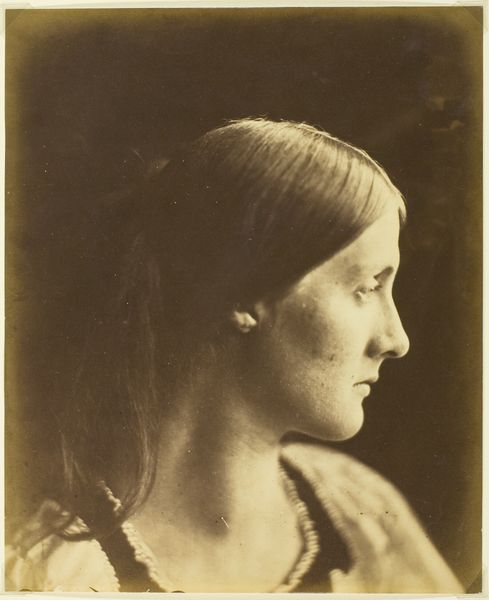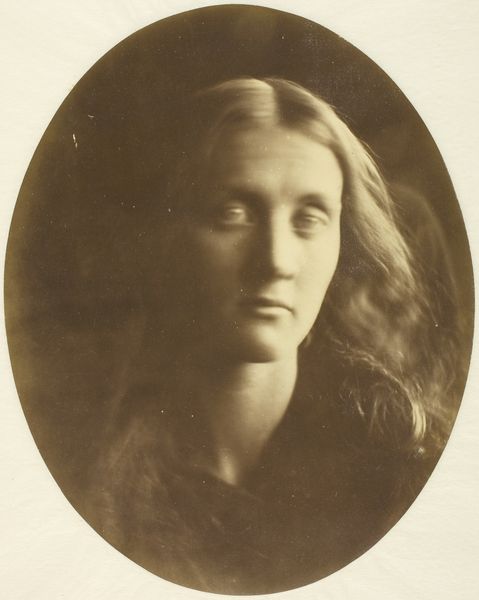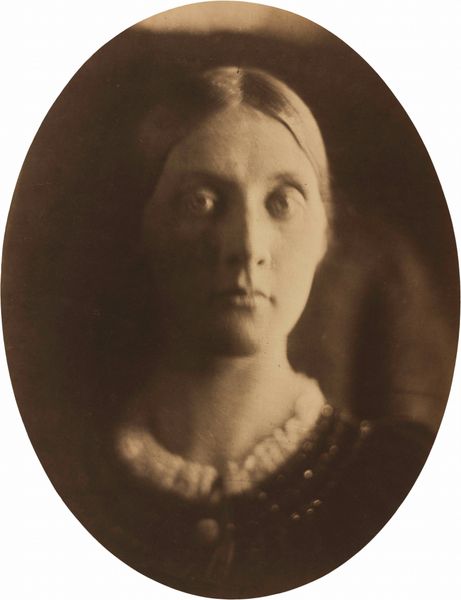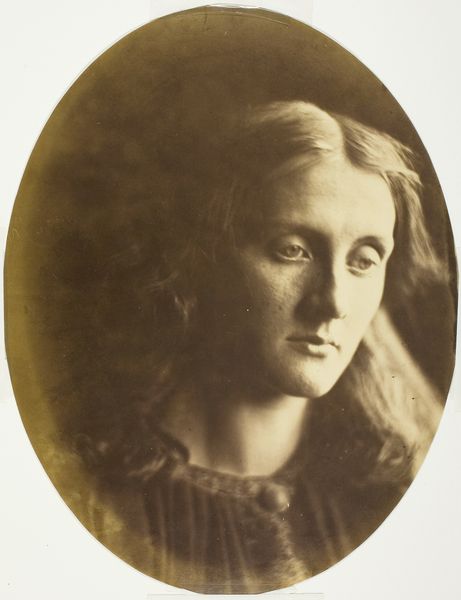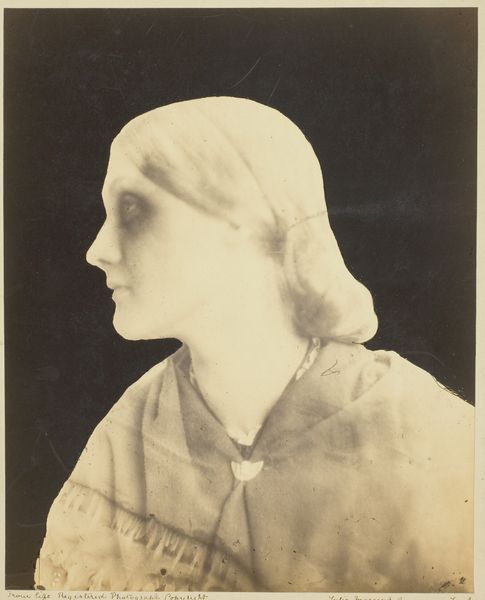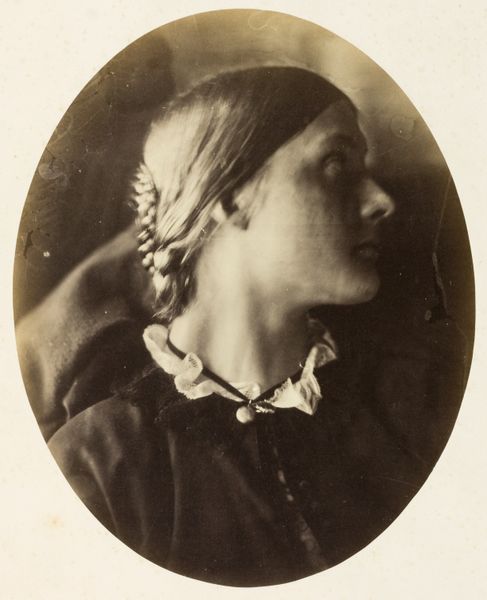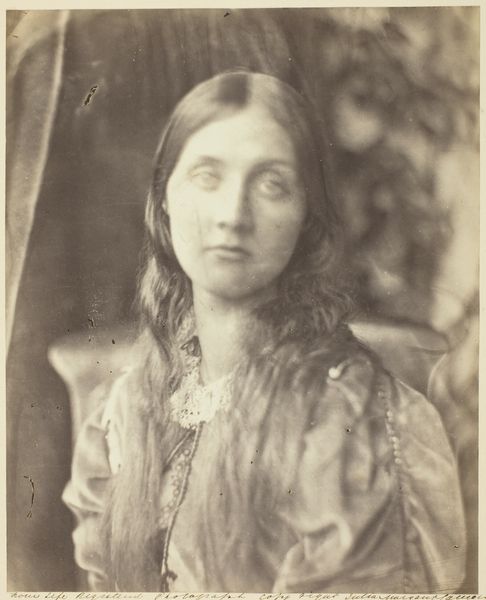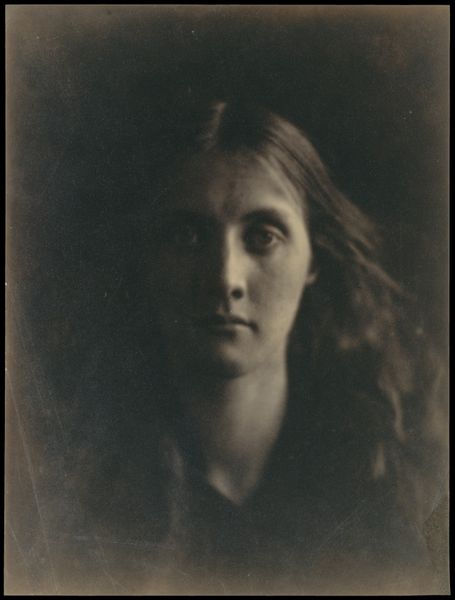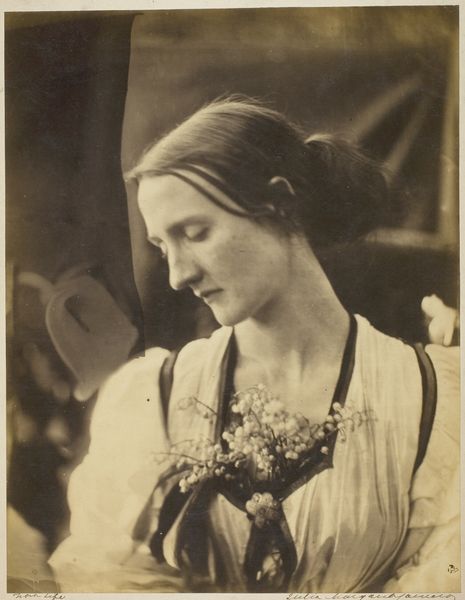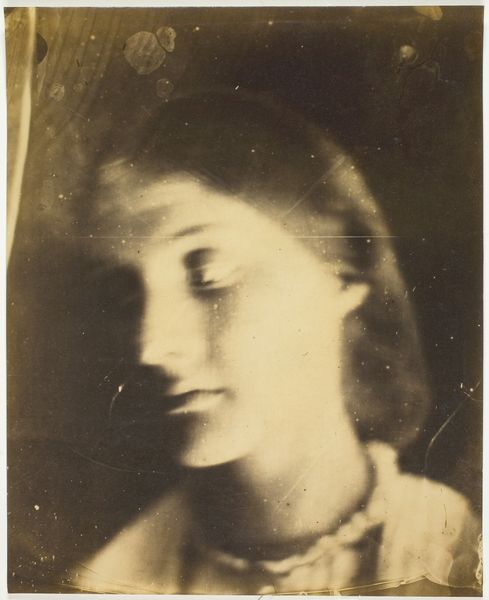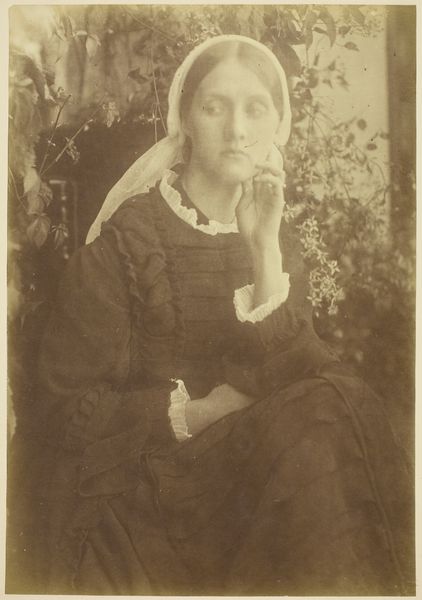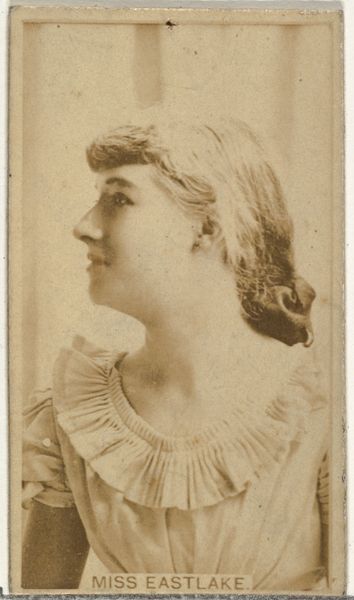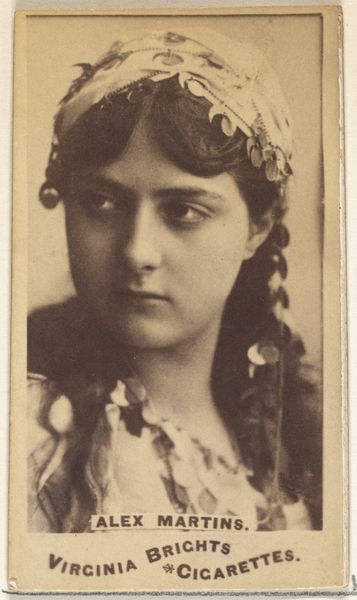
Dimensions: 33.8 × 26.2 cm (17 3/4 × 13 7/8 in.)
Copyright: Public Domain
Curator: This is Julia Margaret Cameron’s portrait of Julia Jackson, a gelatin-silver print from around 1867, currently residing here at The Art Institute of Chicago. It immediately strikes me as otherworldly. Editor: That’s exactly it. There's a dreamy quality, almost like she's a character pulled straight from a pre-Raphaelite painting. The soft focus makes her seem to glow, it's a world away from the sharp clarity we expect from modern photography. Curator: Precisely, Cameron was a key figure in Pictorialism, prioritizing artistic effect over strict realism. As a result, the subject's social standing seems blurred too, though we know Jackson later became the mother of Virginia Woolf, and this work reveals something about the visual construction of the Victorian elite. Editor: Ah, bloodlines of creativity! And knowing that Woolf sprang from this woman adds a whole layer, doesn’t it? Makes you wonder what stories that gaze holds, softened as it is by Cameron's technique. This ethereal feel comes, I think, from how she purposefully left imperfections and blurred the details. What others might consider flaws, she saw as brushstrokes of emotion. Curator: It also reflects a shift away from the more rigid portraiture of the time. Cameron, though from a privileged background, embraced photography as a vehicle for a kind of radical, intimate observation. One might suggest, maybe too strongly, that such radicalism mirrored shifts within the British class structure itself. Editor: Perhaps. The daring nature of her approach allowed her to capture not just likeness but essence. She looked beyond appearances to the spirit within, rendering Jackson less a specific individual, and more of an allegorical or literary muse. A symbol of Victorian ideals, if you will. It makes this more than just a picture of someone's relative; it is a work about seeing itself, as much as the role and portrayal of women. Curator: Well said. Considering the restrictions placed upon women professionally and creatively at the time, the artistic choices that both Cameron and Jackson undertook gain further relevance, not simply to women, but for artists more generally, pushing at constraints on the possibilities and social expectations. Editor: Looking at it again, that blurring, the imperfection… it becomes this incredible invitation. It feels like a beginning. Like this single image carries an invitation to imagine new visions, and create works of art as complex as life itself.
Comments
No comments
Be the first to comment and join the conversation on the ultimate creative platform.
